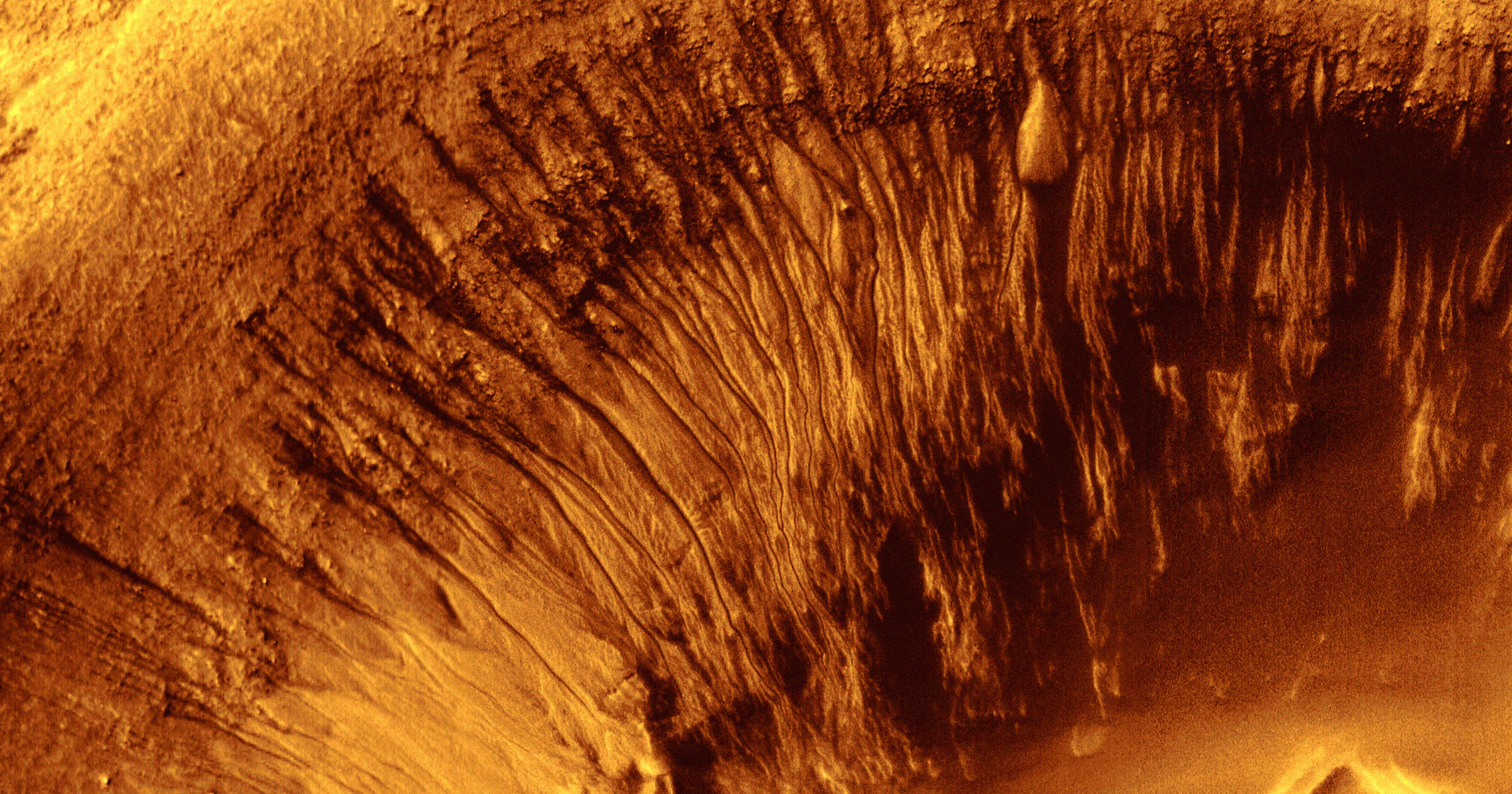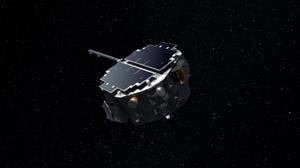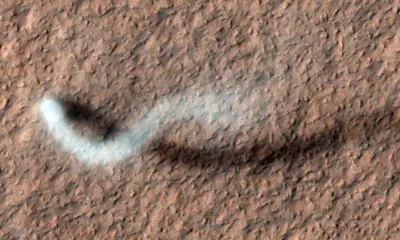Science
Scientists Uncover Mechanism of Martian “Burrowing” Phenomenon

Researchers at Utrecht University are shedding light on a long-standing mystery regarding Martian gullies, which may have been formed by blocks of frozen carbon dioxide “burrowing” into the planet’s surface. This theory, detailed in a recent paper published in Geophysical Research Letters, challenges earlier beliefs that liquid water shaped these intriguing features billions of years ago.
The gullies, which are narrow channels found on Martian dunes, have puzzled scientists since their discovery. Initial hypotheses suggested they stemmed from ancient water flow during a time when Mars was thought to have abundant rivers and lakes. However, observations from NASA’s Mars Reconnaissance Orbiter indicated that seasonal freezing of carbon dioxide could be responsible for their formation.
To further investigate this theory, Earth scientist Lonneke Roelofs and her team conducted laboratory simulations to replicate Martian conditions. They utilized Open University’s specialized “Mars chamber,” designed to mimic the Red Planet’s harsh environment.
The research focused on how blocks of carbon dioxide ice could move through pseudo-regolith, a material that simulates Martian soil. Roelofs described the experience as reminiscent of the sandworms from the film Dune, noting, “In our simulation, I saw how this high gas pressure blasts away the sand around the block in all directions.”
As the temperatures on Mars plummet to as low as -184 degrees Fahrenheit during winter, large blocks of CO2 ice, some measuring up to three feet in length, form on the surface. As temperatures rise towards the end of winter, these ice blocks can break off and exhibit a burrowing behavior, creating the gullies observed from orbit.
The gas pressure generated beneath these blocks can lead to sublimation, a process where solid carbon dioxide transforms directly into gas. This can cause the blocks to move downward through the dune, effectively carving out a channel. Roelofs explained, “The CO2 ice block began to dig into the slope and move downwards just like a burrowing mole or the sandworms from ‘Dune.’”
Through their experiments, the team found that once the blocks of CO2 reach the bottom of the slope, they continue to sublimate until all the gas has evaporated, leaving behind only a hollow in the sand. This process not only contributes to the Martian landscape but also provides insights into potential interactions between climate and geology on other planets.
The findings hold significance beyond Mars, as Roelofs pointed out the potential to enhance our understanding of planetary processes. “Conducting research into the formation of landscape structures of other planets allows us to step outside the frameworks used to think about Earth,” she noted. This perspective could lead to new questions and insights applicable to our own planet.
As scientists continue to explore the complexities of Mars, the implications of Roelofs’s research may pave the way for further discoveries regarding the planet’s history and its potential to host life. The ongoing study of Martian gullies highlights the intricate relationship between environmental conditions and geological features, inviting further exploration of our neighboring planet.
-

 Technology5 months ago
Technology5 months agoDiscover the Top 10 Calorie Counting Apps of 2025
-

 Health2 months ago
Health2 months agoBella Hadid Shares Health Update After Treatment for Lyme Disease
-

 Health3 months ago
Health3 months agoErin Bates Shares Recovery Update Following Sepsis Complications
-

 Technology4 months ago
Technology4 months agoDiscover How to Reverse Image Search Using ChatGPT Effortlessly
-

 Technology1 month ago
Technology1 month agoDiscover 2025’s Top GPUs for Exceptional 4K Gaming Performance
-

 Technology2 months ago
Technology2 months agoElectric Moto Influencer Surronster Arrested in Tijuana
-

 Technology5 months ago
Technology5 months agoMeta Initiates $60B AI Data Center Expansion, Starting in Ohio
-

 Technology5 months ago
Technology5 months agoRecovering a Suspended TikTok Account: A Step-by-Step Guide
-

 Health4 months ago
Health4 months agoTested: Rab Firewall Mountain Jacket Survives Harsh Conditions
-

 Lifestyle5 months ago
Lifestyle5 months agoBelton Family Reunites After Daughter Survives Hill Country Floods
-

 Technology4 months ago
Technology4 months agoHarmonic Launches AI Chatbot App to Transform Mathematical Reasoning
-

 Technology3 months ago
Technology3 months agoUncovering the Top Five Most Challenging Motorcycles to Ride





















